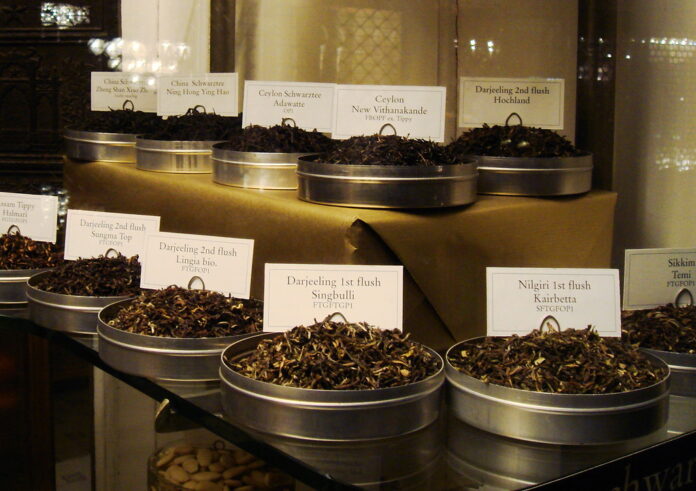Tea is regarded as a prominent key to better health, wisdom, and happiness for many years. Regardless of this fact, it has been a research attraction in the western region looking for how diverse types of tea can be beneficial for sound body and mind. Various studies have proved the wonders of tea to fight heart ailments, cancer, and diabetes. It is also found helpful for boosting weight loss, lowering cholesterol levels, and bringing about physical and mental alertness. Antimicrobial qualities are also found in tea.
With a lot of questions and doubts in mind, you must wonder what should be the amount of tea consumption and how long it should steep to get the most of its benefits. Dieticians and nutritionists agree on one point that all kinds of tea are right. Still, they suggest brewed tea on top of the bottled ones to avoid the consumption of excessive sweeteners and extra calories.
In this article, let’s find out everything about tea that would need to clear off the doubts in your mind and start a habit of drinking tea healthily.
Table of Contents
Where did tea come from?
Tea is a widely used beverage all around the world. The leaf buds and young leaves of tea plants are steeped in boiled water. The botanical name of the tea plant is Camellia Sinensis. The two major types of tea plants are used to produce tea. One is C. Sinensis, a China plant with small leaves, and the other variety is C. Sinensis Assamica plant with large leaves found in Assam. Apart from these two varieties, the producers grow hybrids of them too.
Knowing the history of tea origination, since 2700 BCE approximately, tea has been known and used in China. For a few millennia, it had medicinal purposes and originated from fresh leaves of tea plant boiling in water. During the third century CE, it came into people’s daily drinking habits. Thus, cultivation and processing of tea started. The first-ever published piece about tea plantation methods, its production, and drinking methods appeared in 350CE. Japan received first seeds of tea plants around 800, and then the cultivation was established in the 13th century.
In the year, 1824, the discovery of tea plants in the hilly areas on the Burma and Assam frontier, resulted in the introduction of tea culture in India in the year 1836. The British introduced tea in Ceylon, Sri Lanka, in the year 1867.
Classification of tea
The classification of tea is based on their origination regions like Japanese, China, Ceylon, African tea, and Indonesian Tea. Other than that, ranking is also on the grounds of smaller districts likewise Assam, Darjeeling, Assam and Nilgiris in India, Dimbula and Uva in Sri Lanka, Enshu in Japan, and Anhwei Province of China.
The size of their processed leaf is also a criterion of classification. Conventional methods of tea production produce small broken grades and significant leafy grades. The former include orange pekoe, BOP fanning, dust, and fanning, while the latter provides orange pekoe, flowery pekoe, pekoe souchong, and souchong.
In today’s commercial grading system, broken grades comprise 95 to 100% of tea production. Previously, the manufacturing of an extensive quantity of significant leafy classes had done.
Besides, the manufacturing process is another criterion to classify the tea. It is further classified into three categories:
- Fermented (Black)
- Unfermented (Green)
- Semi-fermented (pouchong or oolong)
Green tea or unfermented tea is generally produced using the China plant, grown usually in China, Japan, and Indonesia, and Malaysia to some extent. Fermented black tea is by far one of the most common types of tea and is produced from hybrid plants or Assam plants. The last one, semi-fermented tea, is mostly produced in Taiwan and Southern China using a special kind of the China plant.
How are leaves processed
In manufacturing tea, the producers pass leaves through all or some of the stages including:
- Withering,
- Rolling,
- Fermentation,
- Drying
There is a twofold purpose behind the processing of tea leaves.
- Drying of leaf
- Allowing leaf chemical constituents to produce peculiar quality in different types of tea.
Caffeine is the best and most commonly known chemical constituent found in tea. It gives an intriguing character to your drink while contributing a few amounts to its flavor, aroma, and color. Types of tea flavors differ with different varieties of teas. Around 4% of fresh leaf solid is Caffeine. Other most crucial chemical constituents in tea comprise polyphenols or tannins. They are bitter tasting and colorless substances giving the astringency to the drink. When an enzyme known as polyphenol oxidase acts upon it, they usually attain a reddish appearance leading to the formation of the beverage’s flavoring compounds.
The tea aroma is the result of certain unstable oils. The qualities of oolong and green tea come from variations during the vital stage of fermentation.
Stages of tea processing
Withering:
In the withering scene, the leaf is plucked where it loses its water content and becomes flaccid. Depending on the kind of processing, the leaf comes to a 55 to 70% weight from 70 to 80 % by weight containing fresh moisture. Afterward, thin layers of the fresh leaf are spread manually onto the sections or trays of tats or coarse fabric. Allowing them to wither till 18 hours to 20 hours, it depends upon various factors comprising humidity, temperature, leaf moisture content, and the size too.
These days, different mechanized systems have replaced the withering process to make different types of tea. For instance:
- Trough withering: forcing air via a thick leaf layer in a trough.
- Drum withering: rotation of perforated drums in place of troughs
- Tunnel withering: mobile trolleys carry the tats with a leaf spread in it, then subject it to a tunnel and expose it to hot air blasts.
Mechanized systems save the time consumed in the withering process, but it lowers the quality of the final product. It happens because the mechanized systems reduce the withering chemical time when a break-down of carbohydrates and proteins into simpler sugars and amino acids occurs. Also, this artificial withering increases polyphenols and caffeine concentration, which is otherwise not possible with mechanized systems.
Rolling:
In the rolling stage, distortion of withered leaves happens. It acquires a distinctive twist with the tea finishing, and there occurs a bursting of leaf cells. It furthers the mixing of polyphenols and enzymes.
In the traditional rolling method, leaves bunches are rolled by hands to twist the leaf and evenly coat with juices and then break into pieces. In rolling machines, there is a circular table which is fixed in the center through a cone. Across its surface, it is fitted with battens or slats. Standing atop the circular table, a circular box with no bottom or a jacket rotates eccentrically in directions opposite to the course of the circular table. In this jacket, the leaf is put to twist and roll it over the battens and cone in a way like hand-rolling. Further, they break the rolled leaf lumps and examine.
Fermentation:
Commencement of the fermentation stage happens after breaking up of leaf cells during the process of rolling. It continues while the rolled leaf is flattened on aluminum trays, which are perforated and put under restricted temperature, aeration, and humidity conditions. It is a chemical reaction series than merely a fermentation process.
The most crucial step of the fermentation process is that polyphenol oxidase oxidizes a few polyphenols into compounds. It further combines with polyphenols forming compounds, orange-red in color, known as theaflavins.
Types of tea and their benefits
With many names of different kinds of tea, green tea, white tea, oolong tea, black tea, and Pu-erh tea are termed as real ones. All of them are the extraction of the Camellia Sinensis plant. It is a shrub found in India and China containing unique antioxidants known as flavonoids. One of the most potent is ECGC, which helps your body against free radicals. Free radicals are responsible for causing heart diseases, cancer, and clogged arteries.
Theanine and Caffeine are found in all of the teas affecting the brain and also heighten your mental alertness. The more the processed leaves, the less is the chance of polyphenol content in it. Flavonoids are present in polyphenol. Black and oolong teas undergo fermentation or oxidation to lower the polyphenol concentration as compared to green tea. However, the anti-oxidizing power of polyphenols remains high.
Here are some of the benefits of various types of tea, as found by some studies.
Green tea
Green tea is produced with steamed tea-leaf. It is incredibly high in EGCG concentration and has been the most widely studied topic. The antioxidants present in green tea can fight arteries clogging, help in weight loss, and mitigate the heart stroke risk. It is also capable of counteracting oxidative stress on your brain and better the cholesterol levels. Green tea can also reduce the chances of Parkinson’s diseases and Alzheimer’s neurological disorders.
Oolong tea
Studies on animals have found that antioxidants in oolong tea can lower the level of harmful cholesterol levels in the body. A specific kind of oolong tea named Wuyi is famous and advertised as a potential supplement for weight loss. However, the claims are not backed up by science.
Black tea
Tea leaves are fermented to produce black tea. The caffeine content is highest in Black tea. Forming the basis for chai (Flavored teas) alongside instant beverages available in the market, studies have found out that black tea protects damaging of lungs. Cigarette smoke is one of the leading causes of damaged lungs. It can also mitigate the risks of stroke.
Pu-erh tea
To produce Pu-erh tea, aged and fermented leaves are used. It is a kind of black tea also because of the pressing of leaves into cakes. According to an animal study, it showed that when Pu-erh tea was given to animals, they encountered minor weight gain and a reduction in the level of LDL Cholesterol.
White tea
It goes through minimal processing. Also, the low oxidation brings the most exquisite taste, delicacy, and freshness to it. It combats with heart diseases, helps in weight loss, and also fights skin aging. These are some of the main types of tea one must try to experience their benefits.
Benefits of Herbal teas
Herbal teas are produced from fruits, herbs, seeds, or roots after steeping them in boiling water. As compared to green, oolong, black, and white teas, herbal teas contain lower antioxidants concentrations. The chemical composition varies, which depends solely upon the kind of plant being used to make herbal tea.
Some of the herbal teas varieties comprise ginseng, ginger hibiscus, mint, jasmine, chamomile, rosehip, and Echinacea.
Though there has not been much research on the herbal teas’ health benefits, claims like herbal tea support shed weight, treatment of cold and cough, bringing restful sleep are voided.
Some of the found health benefits of herbal teas are:
Chamomile tea
Chamomile tea has antioxidants that may be helpful in the prevention of diabetes complications such as vision loss, damage of nerves and kidney, and reduce cancer cell growth.
Hibiscus tea
According to a study, it has been proved that consumption of three hibiscus teacups daily lowers blood pressure in individuals having elevated blood pressure.
Rooibos (Red Tea)
Rooibos, a South-African herb, is fermented and also has properties to fight cancer. The medical studies in red tea are limited.
Echinacea Tea
Echinacea tea is capable of treating the common cold, but the research findings on Echinacea tea and its benefits are inconclusive.
Are instant tea healthy?
You may find various types of tea brands. The reality is they have an ample amount of artificial sweeteners and sugars and very less amount of pure tea. If your health is your priority, then better check the ingredients before buying any one of them.
Hence, it’s up to you to go for any kind of tea and include it in your daily routine. Yet stay cautious while choosing among them because none of the benefits are entirely backed up by science. Most of the types of tea are benign, yet FDA issues warnings for customers to stay cautious.





